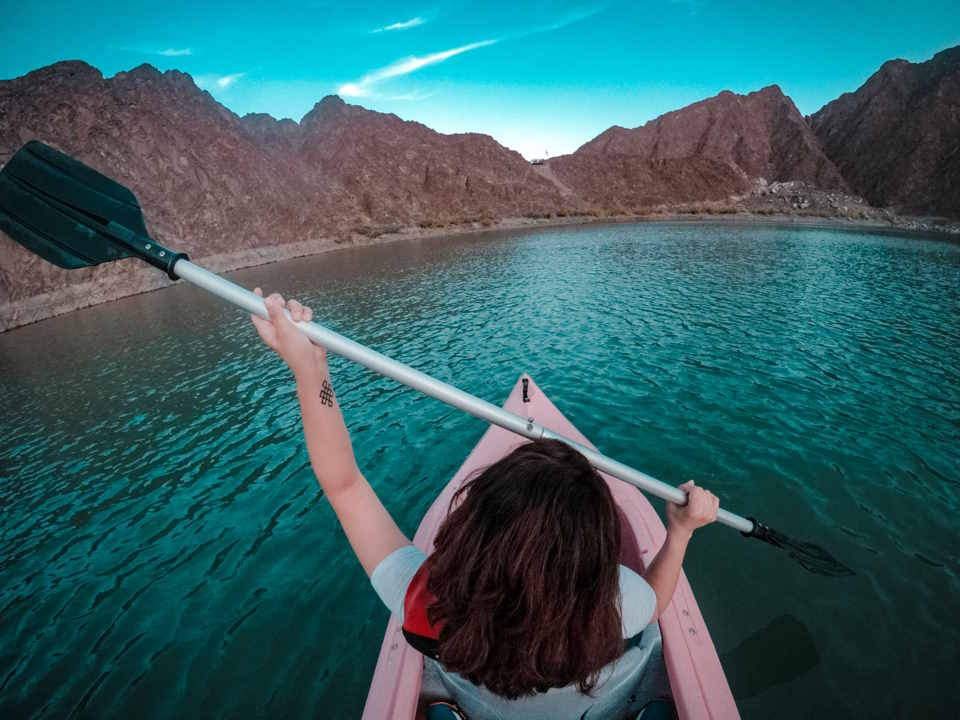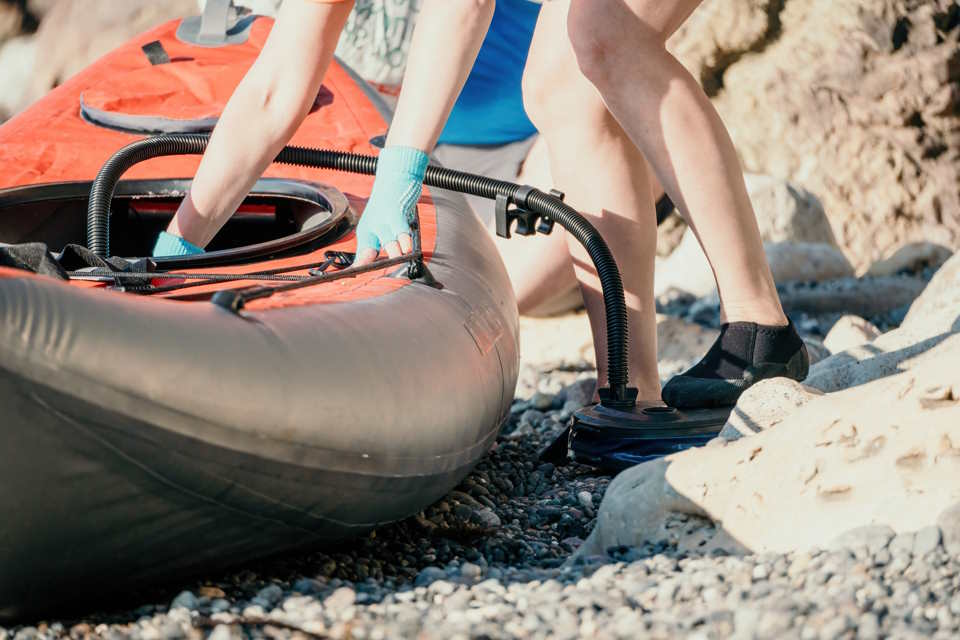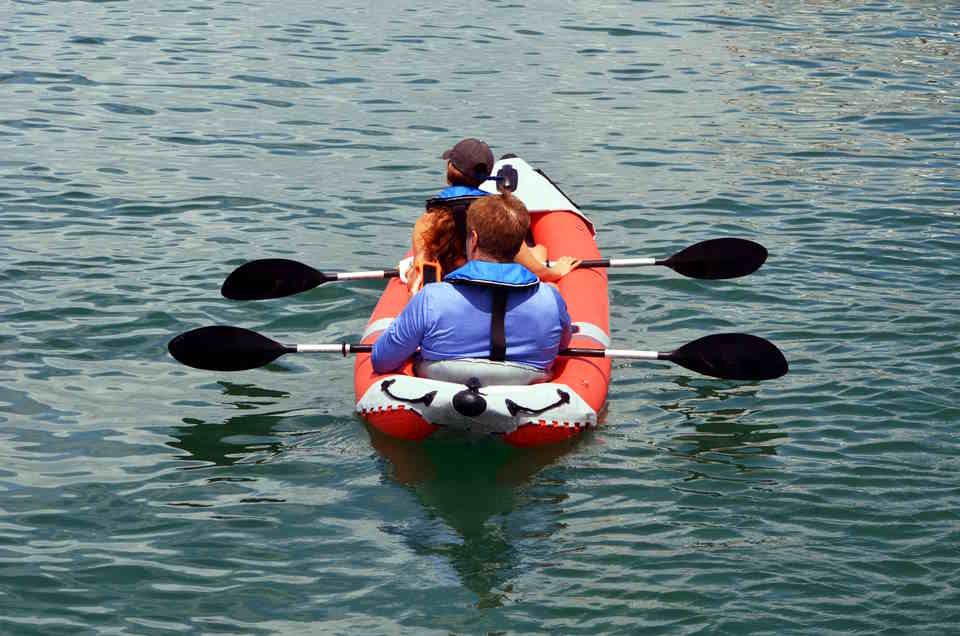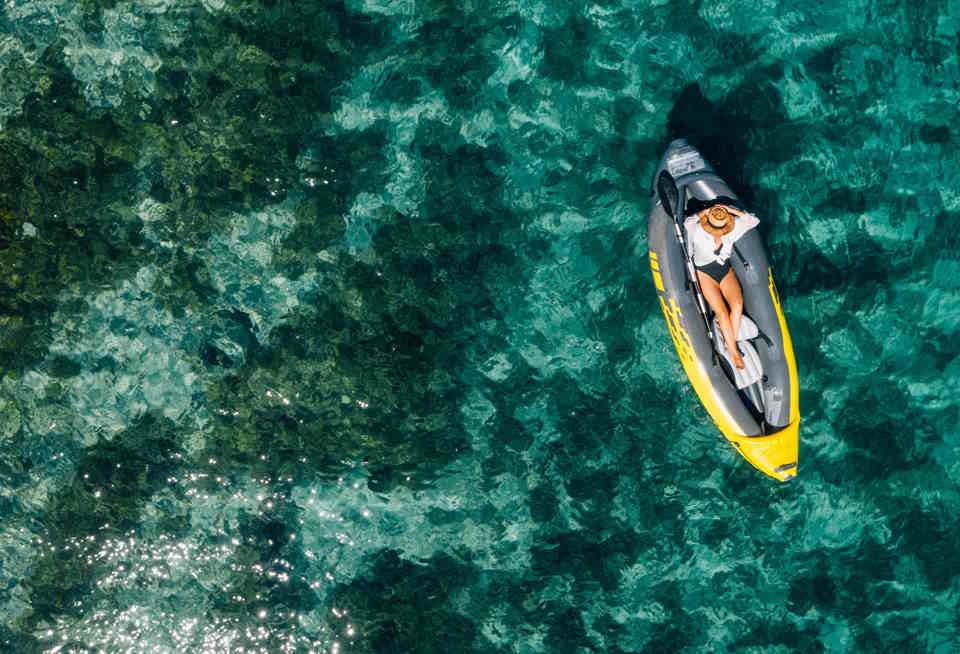Are you ready to embark on a thrilling adventure? Kayaking is a fantastic way to connect with nature, challenge yourself, and experience the serenity of gliding through the water. Whether you’re a beginner or have some experience, we will provide you with a wealth of information to kickstart your kayaking journey. We’ll start by exploring different types of kayaks and how to choose the one that suits you best. Then, we’ll dive into essential gear and equipment you’ll need for a successful outing. After that, we’ll cover basic kayaking techniques and safety precautions to ensure a smooth and enjoyable ride. Lastly, we’ll unveil the most breathtaking kayaking destinations perfect for beginners. So, let’s gear up and get ready to paddle away!
Choosing The Right Kayak For You
Choosing the right kayak can make all the difference when it comes to enjoying your time out on the water. With so many options available, it can be overwhelming to figure out which kayak is best suited for your needs. But fear not! We will dive into the world of kayaks and help you navigate through the different types, sizes, and features to find the perfect fit for you.
When deciding on the right kayak, it’s important to consider the type of kayaking you will be doing. Are you planning on leisurely paddling on calm lakes and rivers, or are you an adrenaline junkie who loves white-water kayaking? Each type of kayaking requires a different style of kayak to ensure safety and maximum enjoyment. So, before you start shopping, think about where and how you will be using your kayak.
The next factor to consider is the size of the kayak. Kayaks come in various lengths and widths, and your body type and skill level will determine which size is best for you. A wider kayak offers more stability, making it ideal for beginners or those who prefer a more relaxed paddling experience. On the other hand, a longer and narrower kayak provides better speed and maneuverability, perfect for experienced kayakers who want to explore different water conditions.
- Now, let’s talk about the features that you should look for in a kayak. One important feature is the cockpit design. If you have long legs or prefer more legroom, look for a kayak with a larger cockpit. Additionally, adjustable footrests and padded seats can greatly enhance your comfort during longer paddling trips.
- Another consideration is the storage options. Depending on your needs, you may want a kayak with waterproof hatches or ample deck space to carry your gear and essentials. Some kayaks even have built-in rod holders for fishing enthusiasts.
- Lastly, don’t forget about the weight and transportability of the kayak. If you plan on frequently loading and unloading your kayak on your own, a lightweight and easily transportable option would be the way to go. However, if you have a kayak trailer or don’t mind the extra weight, this may not be as crucial.
| Kayak Type | Best For |
|---|---|
| Recreational Kayaks | Leisurely paddling on calm lakes and slow-moving rivers |
| Sea Kayaks | Exploring open waters, coastal areas, and ocean kayaking |
| White-Water Kayaks | Thrilling white-water adventures with fast-moving rapids |
| Touring Kayaks | Long-distance paddling and extended trips, offering more storage space |
Essential Gear And Equipment For Kayaking
Kayaking can be a thrilling and exhilarating experience, but in order to fully enjoy your adventure on the water, it’s important to have the right gear and equipment. Whether you’re a beginner or a seasoned kayaker, having the essential items can make all the difference in ensuring a safe and enjoyable trip. So, let’s take a look at some of the must-have gear and equipment to enhance your kayaking experience.
Kayak
First and foremost, you’ll need a kayak – the primary piece of equipment for your kayaking adventures. There are different types of kayaks available, such as recreational kayaks, touring kayaks, and whitewater kayaks. Choose one that suits your skill level and the type of water you’ll be paddling on. Sit-on-top kayaks are great for beginners as they offer stability and are easy to maneuver.
Paddle
No kayaking experience is complete without a sturdy and reliable paddle. It’s important to choose a paddle that is the right length and weight for you. Generally, the paddle should be long enough to comfortably reach the water from your seated position. Additionally, consider the type of paddling you’ll be doing – a wider blade is ideal for calm waters and a narrower blade is better for faster-moving water.
Personal Flotation Device (PFD)
A personal flotation device (PFD), also known as a life jacket, is essential for kayaking. Even if you’re a strong swimmer, wearing a PFD can be a lifesaver in case of unexpected accidents or if you become fatigued. Ensure your PFD is a proper fit and approved by the appropriate authorities. It should be comfortable enough to wear for long periods and have adjustable straps to secure it firmly.
Spray Skirt
If you plan on kayaking in more challenging water conditions or colder climates, a spray skirt is a valuable piece of equipment to have. This accessory covers the opening of the cockpit, preventing water from entering your kayak. It helps keep you dry, warm, and improves overall maneuverability. Make sure to choose a spray skirt that fits your kayak’s cockpit snugly for optimal effectiveness.
Bilge Pump
A bilge pump is a small but incredibly useful tool that every kayaker should have. It allows you to remove water that accumulates inside your kayak easily. Whether you encounter rough waves or get splashed by water, a bilge pump can quickly drain the water and keep you afloat. Opt for a compact, easy-to-use pump that fits securely in your kayak.
| Additional Gear | Essential Tips |
|---|---|
|
|
Basic Kayaking Techniques For Beginners
Are you a beginner kayaker looking to dive into the exciting world of paddling? Well, you’re in luck! We will be exploring some basic kayaking techniques that will help you get started on your thrilling kayaking adventures. So, grab your paddle and let’s jump right in!
1. Getting in and out of the kayak:
Before you hit the water, it’s important to know how to properly get in and out of your kayak. Find a stable spot on the shoreline and position your kayak parallel to the water. Place one hand on each side of the cockpit, carefully lower yourself into the seat, and then slide your legs inside. To exit the kayak, reverse the process by swinging your legs out, placing your hands on the sides, and pushing yourself up.
2. Holding the paddle:
The way you hold the paddle can make a significant difference in your kayaking experience. Hold the paddle with both hands, making sure your hands are shoulder-width apart. Your knuckles should be positioned up, and your elbows slightly bent. Remember, a proper grip on the paddle will allow you to paddle efficiently and reduce the strain on your wrists.
3. Forward stroke:
The forward stroke is the most fundamental technique in kayaking. Start by rotating your torso and extending your top arm forward. Submerge the blade fully in the water near your feet and pull it backward, keeping the blade close to the kayak. As you complete the stroke, rotate your torso back to the starting position and repeat on the other side. This technique will propel you forward steadily and smoothly.
4. Turning strokes:
Being able to maneuver your kayak effectively is key to enjoying your time on the water. Two common turning strokes are the sweep stroke and the draw stroke. The sweep stroke involves placing the paddle blade near the bow or stern of the kayak and sweeping it outward in a long arc. This will turn your kayak in the opposite direction. The draw stroke, on the other hand, involves placing the paddle blade parallel to the kayak and pulling it towards you. Practice these turning strokes to gain control of your kayak.
Safety Precautions And Rescue Skills
Kayaking is such a thrilling and adventurous water activity that can bring out the explorer in all of us. Whether you’re a beginner or a seasoned kayaker, it’s crucial to prioritize safety and learn proper rescue skills. We will discuss the essential safety precautions and rescue skills that every kayaker should know.
First and foremost, always remember to wear a personal flotation device (PFD) when kayaking. This is a life-saving piece of equipment that will keep you afloat if you capsize or encounter any mishaps on the water. Trust me, you don’t want to be caught in the middle of a kayaking adventure without it!
In addition to wearing a PFD, it’s important to be aware of your surroundings. Before you hit the water, familiarize yourself with the kayaking route and be knowledgeable about any potential hazards, such as rocks, strong currents, or submerged obstacles. Having this knowledge will help you plan your trip better and avoid any unnecessary risks.
- Communication is key when it comes to kayaking safety. Always carry a whistle or a waterproof communication device with you. In case of emergencies, these tools can be a lifeline to attract attention and call for help.
| Rescue Skills | Description |
|---|---|
| Self-Rescue | If you capsize, it’s crucial to know how to perform a self-rescue. Practice re-entering your kayak from the water and become comfortable with flipping your kayak back over. |
| Towing | In the event that a fellow kayaker is injured or unable to paddle, towing them back to safety is an essential rescue skill. Learn different towing techniques and practice them with a partner. |
| Safety Signals | Having a set of safety signals can greatly improve communication among kayakers and ensure that everyone is on the same page. Establish a set of signals for different situations, such as “stop,” “distress,” or “all clear.” |
Remember, prevention is always better than cure. Avoid reckless behavior on the water, such as pushing your limits in unfavorable weather conditions or venturing into unknown waters without proper preparation. Always check the weather forecast and let someone know about your kayaking plans before you head out.
Exploring The Best Kayaking Destinations For Beginners
Kayaking is an exciting and adventurous activity that allows you to connect with nature while experiencing a thrilling ride on the water. For beginners looking to explore the best kayaking destinations, there are plenty of options to choose from. Whether you prefer calm and tranquil lakes or prefer the rush of whitewater rapids, there is a destination out there that will cater to your kayaking needs.
Kayaking in Glacier National Park: One of the most picturesque and awe-inspiring destinations for beginners is Glacier National Park in Montana, USA. This national park is home to stunning turquoise lakes and beautiful snow-capped mountains, providing a breathtaking backdrop for your kayaking adventure. Glacier National Park offers a variety of kayaking routes suitable for beginners, such as the scenic Two Medicine Lake or the tranquil McDonald Lake. Exploring these pristine waters will leave you in awe of the natural beauty that surrounds you.
Kayaking in Halong Bay: If you’re looking for a kayaking destination that offers a unique experience, look no further than Halong Bay in Vietnam. This UNESCO World Heritage site is famous for its towering limestone karsts and emerald-green waters. Kayaking through the maze-like formations allows you to discover hidden caves, secluded beaches, and floating villages. The calm and sheltered waters of Halong Bay are ideal for beginners, providing a safe and enjoyable kayaking experience.
Kayaking in the Florida Keys: For those seeking a tropical kayaking adventure, the Florida Keys should be at the top of your list. With its crystal-clear waters and vibrant marine life, the Florida Keys offer endless opportunities to explore and discover. Paddle through the serene mangrove trails of the Florida Keys National Marine Sanctuary, or venture out to the vibrant coral reefs for a snorkeling and kayaking combo adventure. The warm weather and gentle currents make the Florida Keys a fantastic kayaking destination for beginners.
| Kayaking Destination | Best Time to Visit | Tips for Beginners |
|---|---|---|
| Glacier National Park | Summer months for calm waters | Carry proper safety gear |
| Halong Bay | Year-round, but avoid monsoon season | Join a guided tour for navigation support |
| Florida Keys | Winter months for pleasant weather | Take a beginner-friendly kayaking course |
No matter which destination you choose, it’s crucial to do your research beforehand and ensure you have the necessary gear and equipment. This includes a kayak that suits your needs, a comfortable life jacket, a paddle, and proper attire. Additionally, always check the weather conditions and tides before heading out on your kayaking adventure.
Exploring the best kayaking destinations for beginners is not only a thrilling experience but also allows you to appreciate the beauty of nature from a unique perspective. Whether you choose to paddle through the glacial lakes of Montana, the karsts of Vietnam, or the tropical waters of Florida, each destination offers its own charm and adventure. So grab your gear, hop in a kayak, and set off on an unforgettable journey to discover the wonders that these kayaking destinations have to offer!










